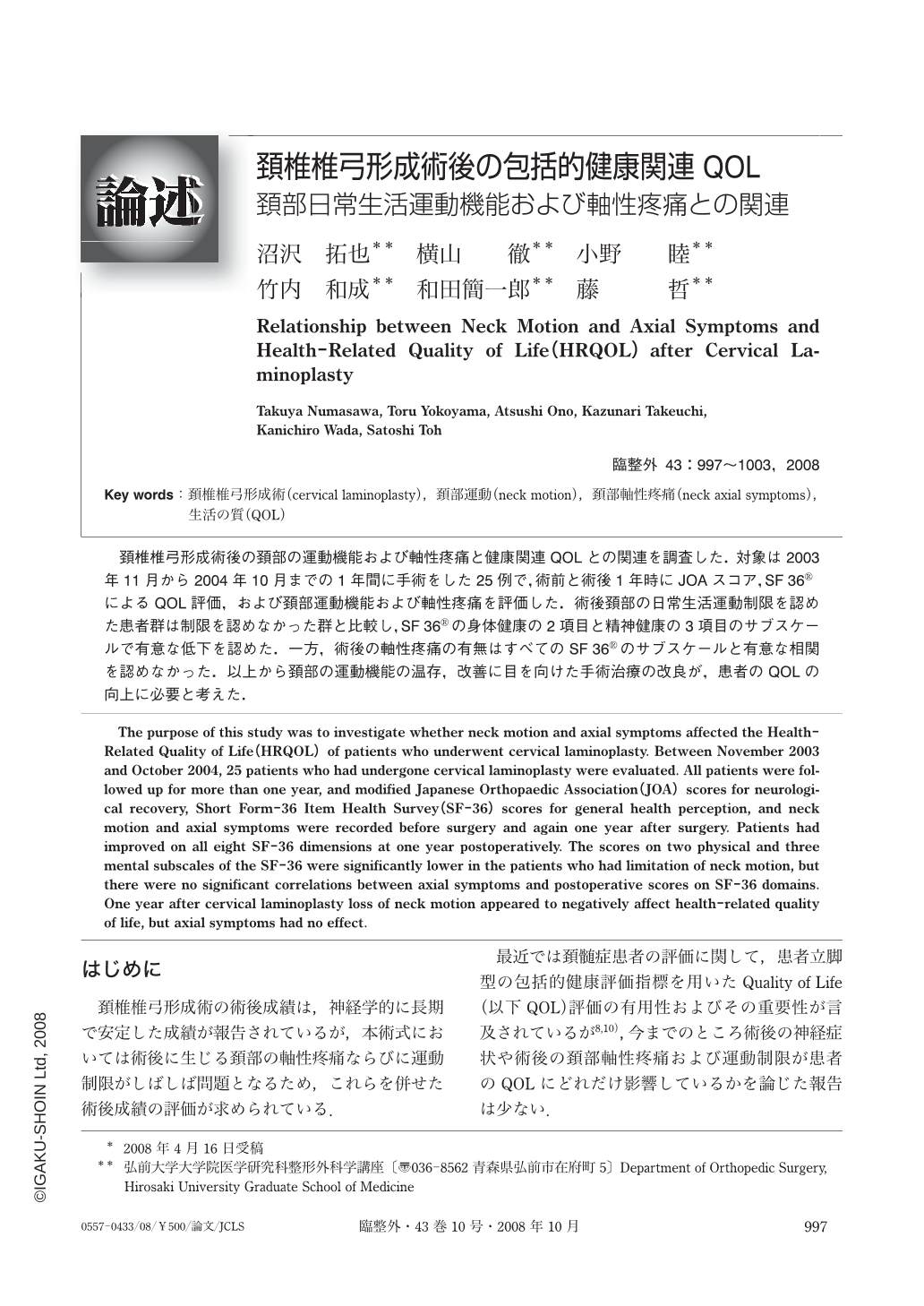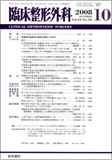Japanese
English
- 有料閲覧
- Abstract 文献概要
- 1ページ目 Look Inside
- 参考文献 Reference
頚椎椎弓形成術後の頚部の運動機能および軸性疼痛と健康関連QOLとの関連を調査した.対象は2003年11月から2004年10月までの1年間に手術をした25例で,術前と術後1年時にJOAスコア,SF 36®によるQOL評価,および頚部運動機能および軸性疼痛を評価した.術後頚部の日常生活運動制限を認めた患者群は制限を認めなかった群と比較し,SF 36®の身体健康の2項目と精神健康の3項目のサブスケールで有意な低下を認めた.一方,術後の軸性疼痛の有無はすべてのSF 36®のサブスケールと有意な相関を認めなかった.以上から頚部の運動機能の温存,改善に目を向けた手術治療の改良が,患者のQOLの向上に必要と考えた.
The purpose of this study was to investigate whether neck motion and axial symptoms affected the Health-Related Quality of Life (HRQOL) of patients who underwent cervical laminoplasty. Between November 2003 and October 2004, 25 patients who had undergone cervical laminoplasty were evaluated. All patients were followed up for more than one year, and modified Japanese Orthopaedic Association (JOA) scores for neurological recovery, Short Form-36 Item Health Survey (SF-36) scores for general health perception, and neck motion and axial symptoms were recorded before surgery and again one year after surgery. Patients had improved on all eight SF-36 dimensions at one year postoperatively. The scores on two physical and three mental subscales of the SF-36 were significantly lower in the patients who had limitation of neck motion, but there were no significant correlations between axial symptoms and postoperative scores on SF-36 domains. One year after cervical laminoplasty loss of neck motion appeared to negatively affect health-related quality of life, but axial symptoms had no effect.

Copyright © 2008, Igaku-Shoin Ltd. All rights reserved.


